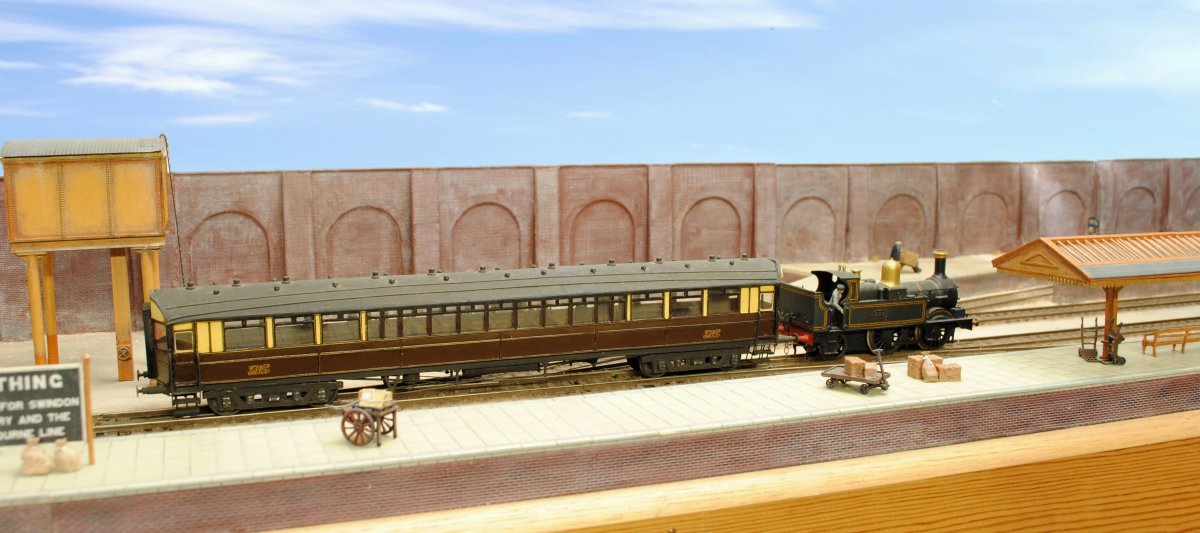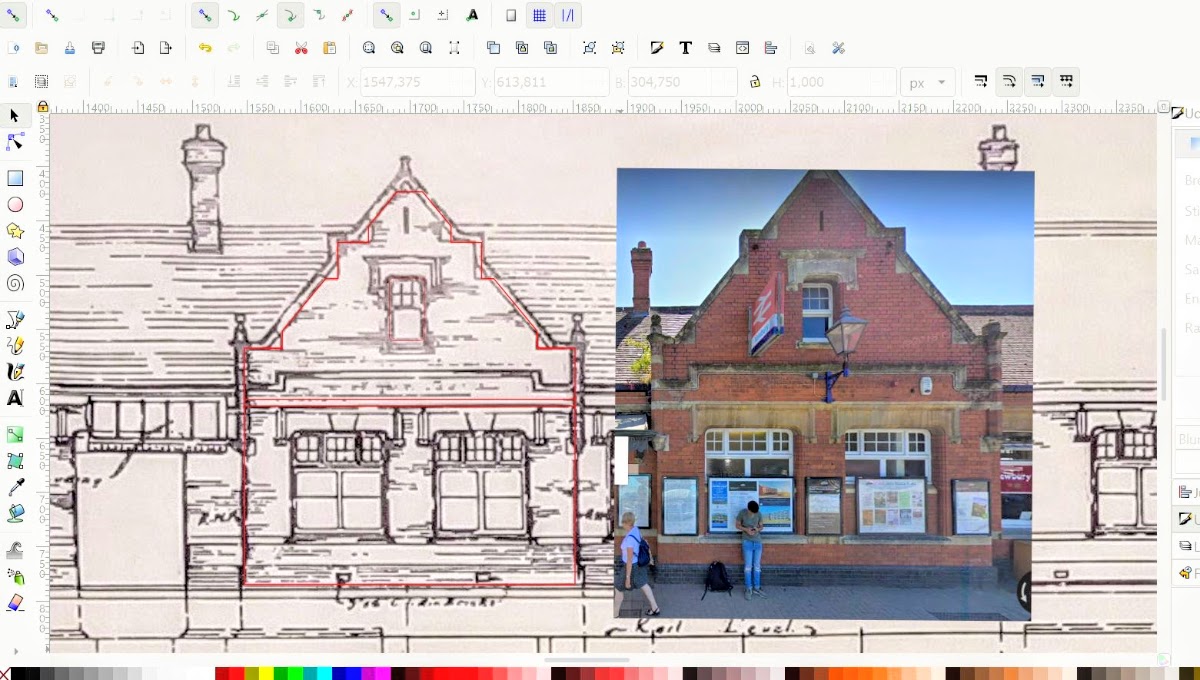I now have four small layouts in the Farthing series, each of which can be operated on my desk or the dining table. That should satisfy my daily operating needs for a while, allowing me to take on Farthing’s main station building and platforms.
For this I’m returning to the Newbury theme. When Newbury station was rebuilt during 1908-1910 four lines were laid, with loop lines along the Up and Down platforms and through lines in the center.
This resulted in the above arrangement. Source: Britain from Above.
As we already know, Farthing’s history and layout as a junction station was very similar to Newbury. So I’ve grabbed this part of the Newbury trackplan and adapted it for Farthing. The two remaining bays are left out for now, but may follow later in one form or another.
As usual it’s very simple. We live in a small flat and I don’t have a layout room, so I’ll join up four modules on the dining table. The modules are stored in an attic room so need to be short and narrow. We have two light work-desks which can be arranged at each end for 150 cm cassettes to slide on. It won’t be practical for my daily running sessions, this is for special occasions.
Though limited, the plan is not completely without operational scope, as listed here. The run isn’t that long but I'd rather do something than nothing. If circumstances allow, future modules can add more length.
One module – the Branch Bay – was the first of the Farthing layouts and so is already done. It just needs the fascia removed, allowing another module to be fitted in front. I’ll still be able to operate it separately during my daily sessions.
I’ve now begun the second module. It will be a scenic board, featuring Farthing’s main station building, viewable from both sides. As simple as it gets.
Except that I have to build this. The station building will be a model of the main Up side building at Newbury.
It is of course still there and can be seen in Google Streetview. Handy when you live across the North Sea during a pandemic.
The architectural style at Newbury was not unique. This is Westbury, where the style appears to have originated when Westbury station was rebuilt in 1899 – indeed Adrian Vaughan calls it the “Westbury style” in his book on GWR architecture. Source: Wikipedia Commons.
A distinctive feature of the style was the shape and decoration of the limestone lintels above rounded windows.
The style was also employed on some other GWR stations in the early 1900s, although without the gables. There were several on the GWR/GCR New Line. This is Bicester North, built 1910. Source: Chiltern Railways on Pinterest.
I spotted a simpler variant in photos of Tyseley, built 1906. Source: Wikipedia Commons.
Back at Newbury, the Upside building is a long structure, as seen here on Google Earth using the handy measuring tool. In 4mm scale it comes out at just under 84 cms. The sensible approach would be to do a compressed version. But I need a challenge, so will do the whole thing.
Here’s a GWR outline drawing of Newbury, with only the wording changed to match Farthing. It’s longer than some of my existing layouts! I’ll build the structure in three main parts, joined by magnets. I anticipate compromises along the way, so expect pragmatism.
Work has begun. I’m tracing the GWR outline drawing in Inkscape in preparation for cutting out brick sheets on my Silhouette Cutter. The GWR drawing is rather rough, but OK for my purposes and I have historical and contemporary photos to work from.
I'm still to decide whether I'll also build the footbridge, seen above. A big task, but tempting. Especially because it’s gone now, removed in 2018 for OLE installation. Slowly, the old world disappears. But modellers are sorcerers, we can bring things back.
















